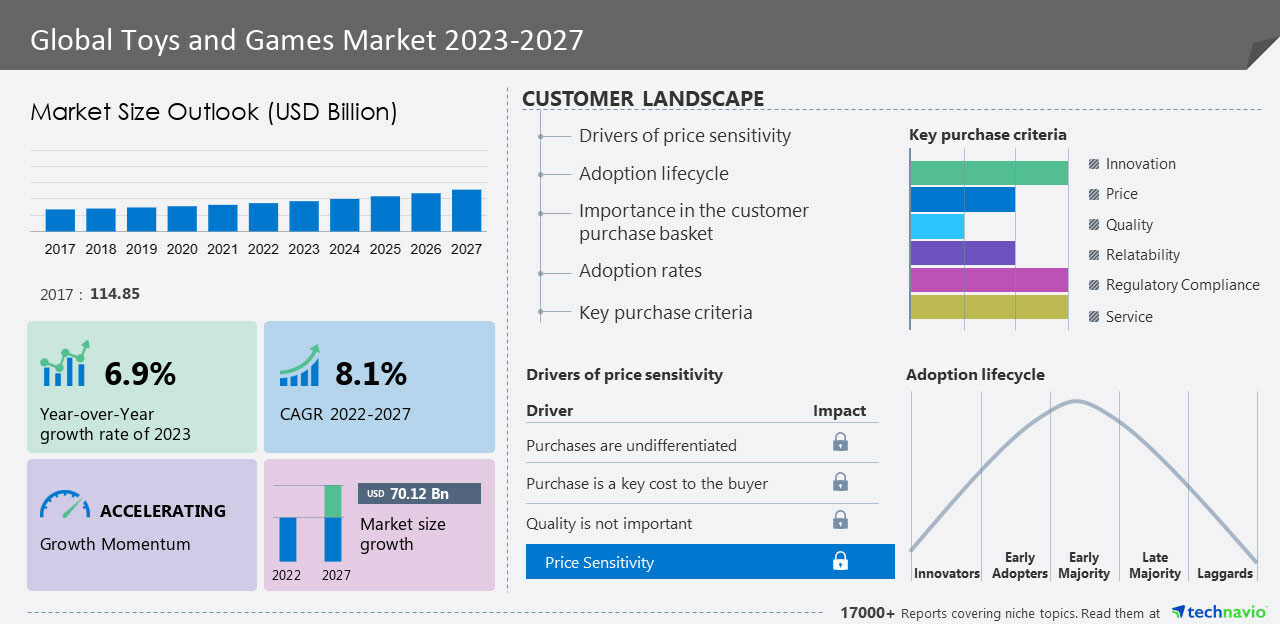The global toys and games market is poised for substantial growth, projected to expand by USD 70.12 billion from 2023 to 2027 with a compound annual growth rate (CAGR) of 8.1%, according to a recent report by Technavio. This growth is partly fueled by innovations and shifting consumer trends, including the increasing use of 3D printing technology that allows consumers to produce their own toys at home. This trend, while innovative, presents challenges such as potential copyright and trademark infringements as consumers might create replicas of licensed characters and games. In response, companies like Sesame Workshop and Hasbro are beginning to offer licenses to 3D printing enthusiasts to legally produce their favorite characters, providing a new revenue stream and mitigating legal risks.
The report highlights that the toys and games market continues to evolve with the inclusion of multifunctional toys that integrate popular media characters from TV shows and movies, as well as eco-friendly toys and technologically advanced games. These offerings cater to a diverse consumer base from children to millennials who value sustainability and digital experiences. Social gaming through mobile platforms and e-stores remains popular, with products ranging from traditional board games to advanced digital gaming systems and VR technologies driving market dynamics.
Key companies such as Mattel, Hasbro, and VTech are leading the market with continuous product innovations and a strong online presence. These companies face a competitive market environment where they strive to maintain their market share by focusing on technological advancements, sustainability, and the cognitive development benefits of their products.
The report underscores the significance of digital and sustainable trends in the toys and games industry, indicating that these will be crucial in shaping future market dynamics. Companies are encouraged to adapt to these changes by investing in digital content and eco-friendly products to meet the evolving demands of modern consumers.

